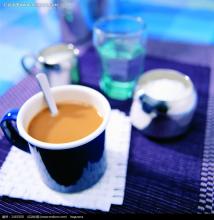Rich aroma of Colombian boutique coffee flavor taste the characteristics of the manor producing area of Colombian coffee
Colombia, on the other hand, has three Codiera mountains running north-south, right into the Andes. Coffee is grown along the highlands of these mountains. The mountain steps provide a diverse climate, where the whole year is the harvest season, and different kinds of coffee ripen at different times. And fortunately, unlike Brazil, Colombia doesn't have to worry about frost. Colombia has about 2.7 billion coffee trees, 66 per cent of which are planted in modern plantations and the rest on small traditionally run farms.
One of the most famous producing areas is Nalinglong province. The other real name is Narino, literally translated as "Narinho", and translated as "Na Linglong" by the domestic coffee industry. Na Linglong has a balanced and soft flavor, clean and rich flavors of apricot, grapefruit and toffee, so it is popular with coffee gluttons. And this is because: Colombia is famous for its high altitude, the lower altitude in the north-central part mainly produces commercial beans, and the south-central part mainly produces high-quality beans. The south-central region is also the area for the winners of previous "extraordinary cups" and SCAA "Coffee of the year", and Nalinglong Province is one of them. At the same time, the quality of Colombian coffee beans is divided into more than 200 grades, with SUPERMO as the highest grade, followed by EXCELSO, but only selected coffee with beans No. 18 (diameter 18x64 inches in diameter) can be included in the selection. And Na Linglong is the SUPERMO quality. And this is also closely related to Na Linglong's choice of high-quality Kaddura varieties and high-quality natural conditions. Colombian Coffee and soft Nalinglong
Picture of coffee growing area in Nalinglong province
Nalinglong province is closer to the equator, about one degree north latitude, with plenty of light throughout the year; the elevation is more than 1600 meters, and there are few snow peaks all the year round in the territory. Steep mountains and narrow steep slopes bring a warm and diverse climate. The warm and humid air rising from the canyon protects coffee grown at high altitude from frost, so that coffee can be grown smoothly at an altitude of 2300 meters. Volcanic soil provides rich nutrients for the growth of coffee.
Colombian Coffee and soft Nalinglong
Beautiful Na Linglong raw beans
And the annual rainfall in Nalinglong province shows a peak distribution, with a rainy season, which lasts from October of that year to May of the following year, and the dry season lasts for June, July and August. However, even in dry months, coffee farmers will not worry too much, because the warm current caused by trade winds from the southern continent meets with cool nights to produce enough water vapor to replenish coffee trees. Thanks to this, Na Linglong's secret of quality has come to light.
As a result, it is no wonder that Na Linglong won the top six places in the 2010 Columbia COE Competition, with eight places in Top10 and 17 places in Top21. The high quality can be seen from this.
And that's why I only recommend Na Linglong this bean to you. If you choose moderate baking, its rich flavor of apples, apricots, grapefruit, cream and toffee will never let you down.

Important Notice :
前街咖啡 FrontStreet Coffee has moved to new addredd:
FrontStreet Coffee Address: 315,Donghua East Road,GuangZhou
Tel:020 38364473
- Prev

The strong taste of Kenyan coffee the characteristics of the manor producing area introduce the origin of Kenyan coffee
Kenyan coffee beans the Kenyan government takes the coffee industry very seriously, where it is illegal to cut down or destroy coffee trees. Kenyan coffee buyers are world-class high-quality coffee buyers, and no other country can grow, produce and sell coffee on a continuous basis like Kenya. All coffee beans are first made by the Kenya Coffee Commission (CoffeeBoardofKenya, CB for short)
- Next

The flavor and taste of washed Rwandan coffee the characteristics of the manor producing area introduce the origin of Rwandan coffee.
Most of the coffee in Rwanda is washed. The water washing method will first wash and flotation the ripe coffee fruit, then remove the exocarp, pulp and part of the pectin layer, then send the coffee into the fermentation tank, remove the remaining pectin layer and then send it to the drying ground for drying treatment, so that the water content reaches about 13%. The coffee in the picture above is placed in an African shed to dry.
Related
- Detailed explanation of Jadeite planting Land in Panamanian Jadeite Manor introduction to the grading system of Jadeite competitive bidding, Red bid, Green bid and Rose Summer
- Story of Coffee planting in Brenka region of Costa Rica Stonehenge Manor anaerobic heavy honey treatment of flavor mouth
- What's on the barrel of Blue Mountain Coffee beans?
- Can American coffee also pull flowers? How to use hot American style to pull out a good-looking pattern?
- Can you make a cold extract with coffee beans? What is the right proportion for cold-extracted coffee formula?
- Indonesian PWN Gold Mandrine Coffee Origin Features Flavor How to Chong? Mandolin coffee is American.
- A brief introduction to the flavor characteristics of Brazilian yellow bourbon coffee beans
- What is the effect of different water quality on the flavor of cold-extracted coffee? What kind of water is best for brewing coffee?
- Why do you think of Rose Summer whenever you mention Panamanian coffee?
- Introduction to the characteristics of authentic blue mountain coffee bean producing areas? What is the CIB Coffee Authority in Jamaica?

